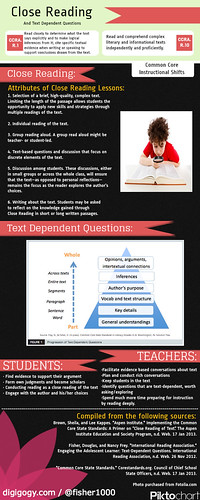Students who are working in school only for the sake of learning may not be learning all that a teacher intends. They may simply be checking off what needs to be done in order to move on. Students who are engaged are learning at a sticky level, where ownership and attention are driving them toward maximum performance.
I decided to go digging into my own classroom archives (because it’s OKAY to upgrade from a known starting point!) and found a lesson I used to do with my science students around Bjork’s song, “Joga.” Bjork is an Icelandic singer and I chose the song because of the video I saw on MTV, back in the days when MTV showed music videos! The video is a combination of realistic and digitally manipulated/animated views of Iceland. Iceland sits on a divergent plate boundary and is subject to all kinds of tectonic activities.
My original lesson/learning moment involved a discussion of plate tectonics, Iceland, a viewing of the video, and then what I thought were Higher Level questions. Those questions, it turned out, were more holistic in nature and somewhat touchy-feely. They may have engaged at a creativity level but not necessarily at a learning level.
In our upcoming book, Upgrade Your Curriculum: Practical Ways to Transform Units and Engage Students (ASCD, March 2013), Janet Hale and I advocate for both learning AND engagement. I’ve written about this before and it is now a constant in my thought processes when I start tackling upgrades of any sort. For this particular upgrade, I’m looking for learning and engagement through the lenses of Curriculum Examinations and Higher-Order Thinking. Specifically, I’m looking to repurpose something I already had in my bag of tricks and kick it up ten notches in terms of what the Common Core is asking students to know and be able to do. I’m also kicking up the Higher-Order thinking skills and making the questions less about summary and blanket statements and more about text-dependence and metacognition.
In the Lesson Upgrade embedded below, you can see my original lesson ideas at the end of the document. There are links embedded in the Lesson Upgrade so that you have all the resources you need to do this in your classroom. I purchased the DVD of the Bjork video so that there would be no Youtube advertising and I could show it in High Definition. The Youtube link is included here, though.
I welcome your feedback. I know there are some issues already with the Text Complexity. I’m walking a fine line of justification here, because of the low lexile measure. I don’t know if it’s a function of the limited amount of text in the lyrics or the lack of high-octane words, but the addition of the visual, the implicit meanings, and the associated domain-specific vocabulary in a science discussion related to plate tectonics made me feel comfortable using this with 6th through 8th grade students.
Cure for the Common Core - eBook available now from Amazon
Mike on Twitter:@fisher1000
Janet on Twitter: @janet_hale
Janet’s New Common Core ELA Progressive Continuums Web App
Upgrade Your Curriculum: Practical Ways to Transform Units and Engage Students - coming in Feb. 2013 from ASCD
Cure for the Common Core - eBook available now from Amazon
Mike on Twitter:@fisher1000
Janet on Twitter: @janet_hale
Janet’s New Common Core ELA Progressive Continuums Web App
Upgrade Your Curriculum: Practical Ways to Transform Units and Engage Students - coming in Feb. 2013 from ASCD

